Can Bed Bugs Survive in the Cold?
Bed bugs are a common household pest that can be difficult to get rid of. These tiny invaders are notorious for their resilience and can wreak havoc in your home, particularly during the warmer months. But as the mercury dips, many homeowners wonder if these pests can withstand the chill. Can bed bugs survive the cold? This important question comes up as the temperature drops. In this detailed guide, we explore how bed bugs manage in cold conditions and provide you with practical methods to get rid of them, helping to keep your home free of pests throughout the year.
What Happens to Bed Bugs in the Winter?
As temperatures drop in the winter, bed bugs enter a dormant state known as diapause. Bed bugs will not feed in this state, and their metabolism slows down. As a result, bed bugs can survive for long periods without food. Bed bugs have been known to survive for 18 months without a blood meal. However, bed bugs are not truly hibernating in the winter and can be aroused from their dormant state if they encounter warm temperatures. Therefore, bed bugs can still be found in homes during the winter months. Bed bugs will typically try to find a crack or crevice to crawl into to remain hidden and protected from the cold. Once bed bugs have found a suitable shelter, they will huddle together in groups to preserve body heat. As a result, bed bug infestations may increase in the winter months.
What Temperature Kills Bed Bugs Instantly?
Bed bugs have been known to survive for several days in temperatures as low as 14 degrees Fahrenheit. This is possible because they enter a dormant state when it gets too cold. But if the temperature drops below zero degrees Fahrenheit, bed bugs will die within hours. So, if you’re trying to get rid of bed bugs in your home, turning up the heat is an effective way to do it.
How Can I Prevent Bed Bugs in the Winter?
There are a few things you can do to prevent bed bugs in the winter:
- Inspect your home regularly for signs of bed bugs. Look for the signs mentioned above, such as small blood stains on your sheets or bedding.
- Seal up any cracks and crevices in your home where bed bugs may be hiding. Use caulk to seal any gaps or holes in your walls or baseboards. You can also use a portable heater to warm up areas where bed bugs may be hiding.
- Consider using a bed bug heater to kill any bed bugs hiding in your home. These devices work by heating the air in your home to between 120 and 130 degrees Fahrenheit, which is hot enough to kill bed bugs quickly and effectively.
If there’s a huge infestation, it is better to call a professional pest control service to get rid of the problem. However, if the infestation is minimal, you may be able to use these tips on your own to kill bed bugs. With some time and patience, you can eliminate bed bugs from your home in the winter and enjoy a pest-free season!
Bed Bug Treatment in the Winter
There are two main ways to treat bed bugs in the winter: cold treatment and heat treatment.
Cold treatment involves using low temperatures to kill bed bugs. This can be done by placing infested items in a freezer or using a portable cooling device. However, it is important to note that bed bugs can survive for long periods in cold temperatures, so this method may not be as effective.
Heat treatment is a more effective way to kill bed bugs, especially in the winter when temperatures are typically lower. A professional bed bug extermination service can use specialized heaters to raise your home’s temperature to between 120 and 130 degrees Fahrenheit, which will quickly kill all bed bugs that come into contact with it. If you are dealing with a bed bug infestation, you may consider using heat treatment to get rid of them. With the right tools and techniques, you can say goodbye to those pesky bed bugs!
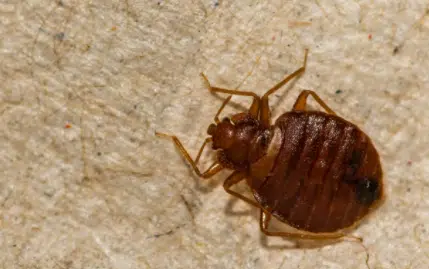
Related Articles
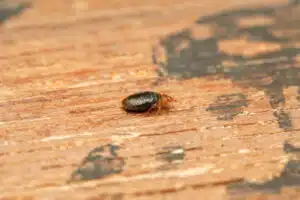
Tick vs. Bed Bugs: Differences and Similarities
Understanding the differences between two common blood-sucking pests, ticks and bed bugs, is important. We want to make sure you know exactly what kind of pests you’re dealing with,
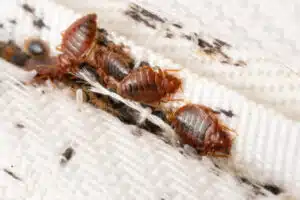
Where Do Bed Bugs Come From, and How to Prevent Them? A Guide for Salt Lake Residents
Bed bugs can be a major nuisance and cause various physical and emotional problems, including skin irritation, anxiety, and sleep disturbances. In Salt Lake City, bed bugs are a growing concern, especially in apartment buildings, hotels, and other high-density living spaces. But where do bed bugs come from, and how can you prevent them from infesting your home or property?
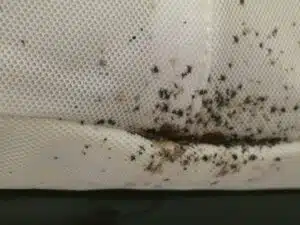
Are All the Tiny Black Bugs in My Bed Bed Bugs?
Sleeping is one of the things that we look forward to after a very long day. We recharge ourselves by sleeping by the end of the night to be refreshed the next day. But we can be disturbed even during our sleep by pesky pests crawling and hiding where we sleep. That’s terrifying, right? Pests that are known to annoy us during our sleep are bed bugs. They are usually found where humans and other pets sleep. Bed bugs can be almost anywhere in the world – even in your Saltlake home! They can be annoying because they suck your blood and leave you with an itch and bumps in the infected area. So blood attracts them, even the blood of other animals. Therefore, you should conduct bed bug removal if you have them. If you find bugs on your beds, you might think they are bed bugs. But are they?

Can Bed Bugs Live in Your Car?
Bed bugs are small, flat, and oval-shaped insects that feed on the blood of humans and animals. During the day, bed bugs hide in cracks and crevices around beds, furniture, and baseboards. You can also find them in mattresses, bed frames, blankets, carpets, and other fabric items throughout your home. While it is possible for bed bugs to infest your car, they’re less likely to do so than inside a house or other structure.
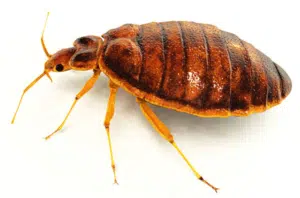
How to Find Bed Bugs in Your Home
Bed bugs are small, blood-sucking that feed on human and animal blood. They belong to the family Cimicidae, contain over 100 species, and have been around for millions of years.

Can Bed Bugs Jump?
Bed bugs are a common household pest that can be difficult to get rid of. These tiny insects can live in any crevice or crack in your home and feed on blood.
